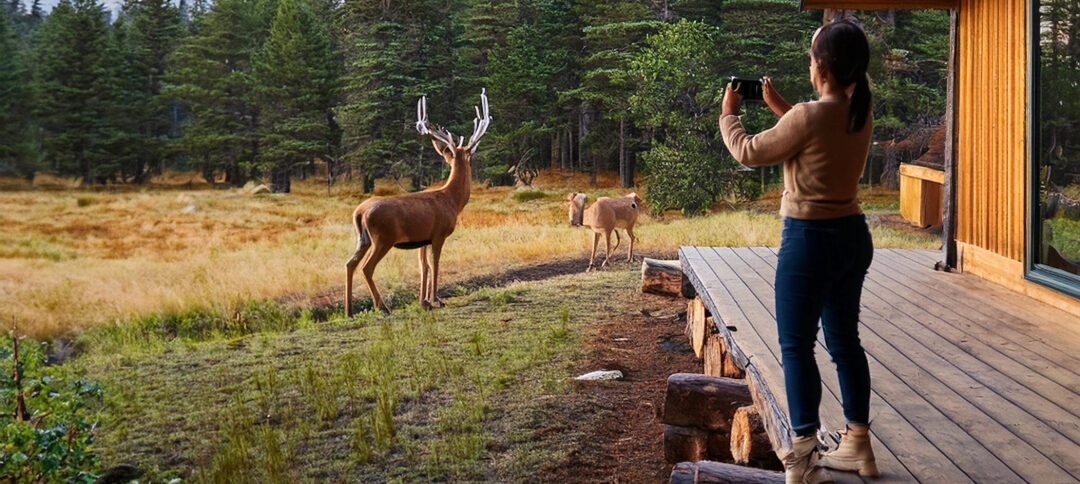Mountain lions, also known as cougars or pumas, are majestic creatures that roam across North and South America. Their natural habitat includes forests, mountains, deserts, and even prairies. These big cats are most commonly found in areas with dense underbrush and rocky terrain, which offer plenty of cover for hunting and resting.
Mountain lions are solitary animals, meaning they live and hunt alone, only coming together for breeding. Their behavior is largely nocturnal, although they can be active during dawn and dusk. A mountain lion’s diet primarily consists of deer, but they will also hunt smaller animals like rabbits, raccoons, and even domestic pets if other food sources are scarce.
Encounters with mountain lions are rare but can happen, especially in regions where urban development encroaches on their habitats. They tend to avoid human interaction, but may venture closer to populated areas in search of food or territory. Statistically speaking, attacks on humans are exceedingly rare; you’re more likely to be struck by lightning. However, understanding these encounters helps in being prepared for the unexpected.
Mountain lion-human interactions have increased over the years due to habitat loss and fragmentation. As people move into areas that were once wild, the chances of crossing paths with these elusive predators rise. Knowing the behavior and characteristics of mountain lions can be the difference between a safe encounter and a dangerous one. For example, mountain lions possess excellent hearing and vision, making them highly effective hunters, which also means they’ll spot you long before you see them.
What to Do During a Mountain Lion Encounter
Staying calm is your number one priority during a mountain lion encounter. Easier said than done, right? But panicking can trigger the lion’s instinct to chase. No matter how fast you think you are, a mountain lion is much faster.
Make yourself appear as large as possible by raising your arms or opening your jacket if you’re wearing one. This can make you seem more intimidating to the lion. Puffing up like this shows that you’re not an easy target.
Firmly and loudly tell the lion to back off. Yup, talk to the lion. Use a strong voice to deter it, making it clear you’re not prey. This direct communication can sometimes convince the lion to leave you alone.
Maintain eye contact and start to back away slowly. Quick movements can trigger a chase, so move deliberately and confidently. Don’t turn your back on the lion as you do this. Keep facing it while moving away.
Protecting children and pets is crucial. Pick up small children immediately without bending too much, and make sure pets are on a short leash. Keep them close to you to make your group appear larger and more threatening.

Deterrents like bear spray, air horns,
(click on the highlighted link above for a bear spray/air horn combo) or even throwing rocks can be effective if the lion doesn’t retreat. These tools can buy you time to get to a safer location. Always have some form of deterrent if you’re in mountain lion territory.
Air horns are a great idea but maybe not quite this close! (Just a little humor to lighten the mood).
Standing your ground might feel counterintuitive, but it’s essential. Remember, you want to convey strength and dominance to avoid being perceived as easy prey.
What Not to Do During a Mountain Lion Encounter
Sudden movements can spell trouble. Jolting or running away might activate the lion’s chase instinct, which is something you definitely want to avoid.
Crouching or bending over isn’t wise either. These positions mimic the posture of prey animals and can make you look more like lunch.
Turning your back is a big no-no. Keep your eyes on the lion at all times to show you’re aware of its presence. Survival instincts kick in stronger when the lion knows it’s being watched.
Under no circumstances should you approach a mountain lion, even if it seems calm or uninterested. Remember, it’s still a wild animal with unpredictable behavior.
Avoid feeding or provoking a mountain lion. Leaving food out or acting aggressive could encourage the lion to see humans as a source of food or a potential threat, which can end badly.
Spotting the signs of aggression can help you make critical decisions. If the lion’s ears are laid back, it’s growling, or its tail is twitching, these are red flags that it’s feeling threatened or ready to attack. Taking these signs seriously is crucial.
As an Amazon Associate I earn from qualifying purchases.





